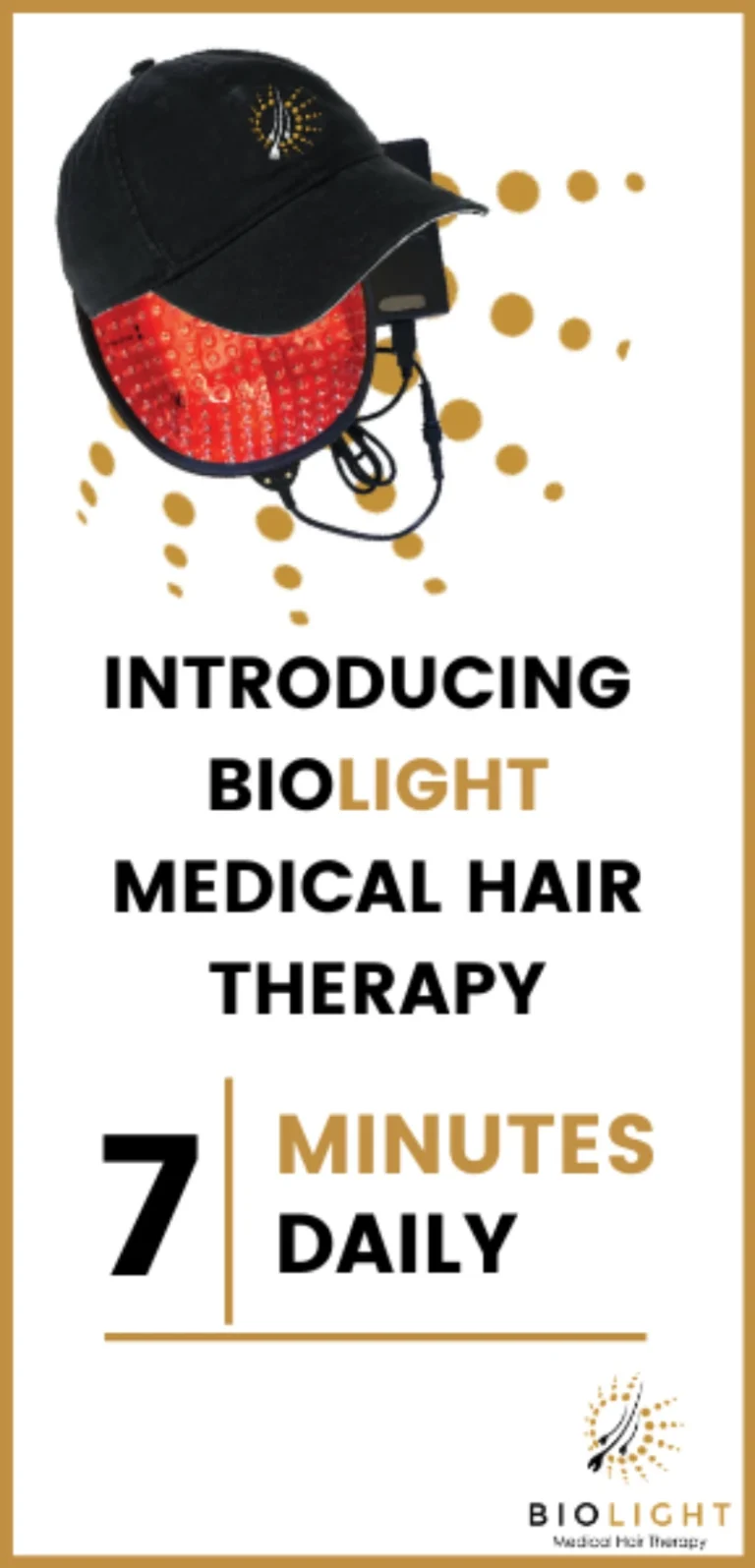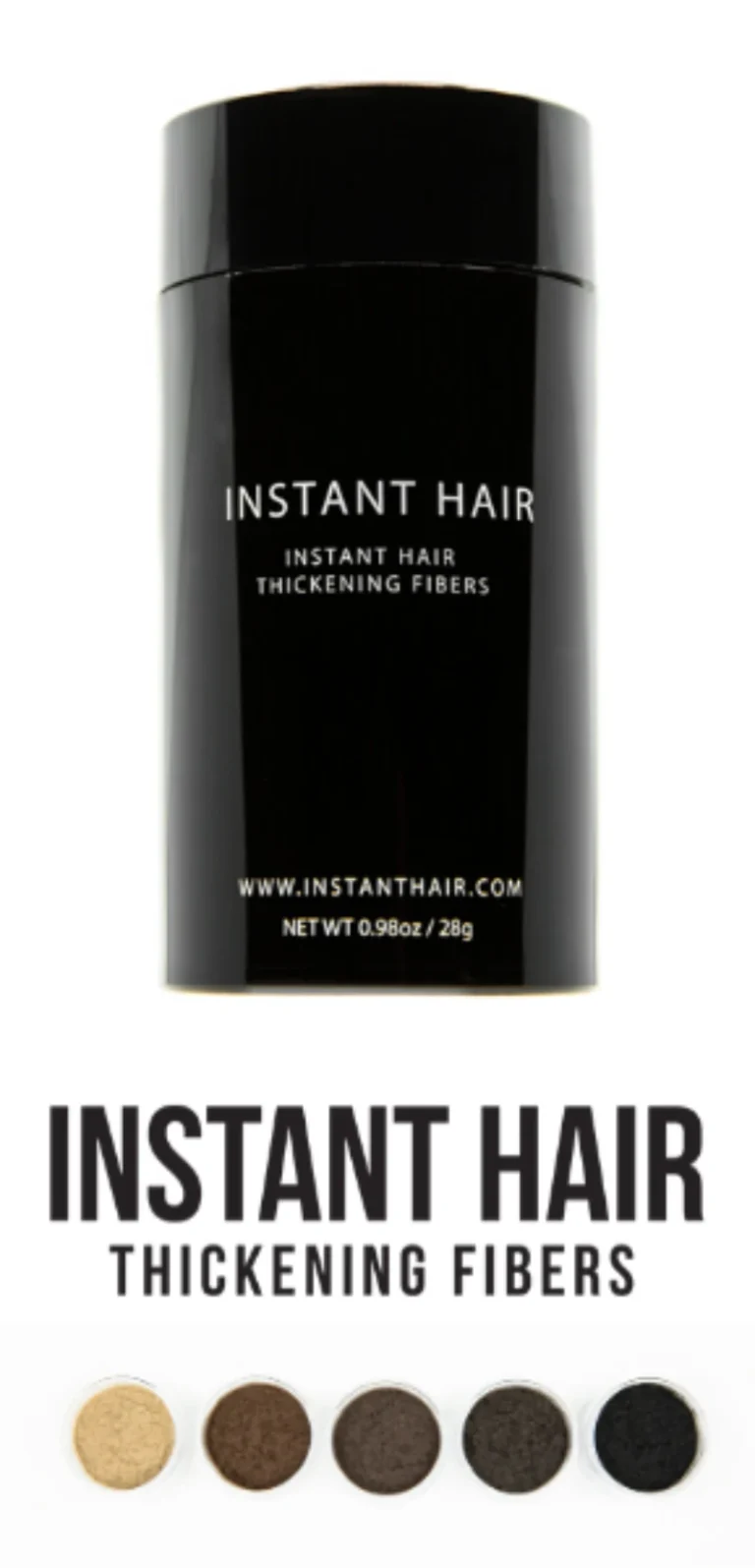Minoxidil/Rogaine Solution for Hair Loss
Minoxidil is the generic name for Rogaine, a topical solution used to prevent hair loss and to help regrow hair in people with genetic hair loss or androgenetic alopecia. Minoxidil is available in a liquid form, which contains alcohol and propylene glycol to facilitate absorption into the scalp tissue.

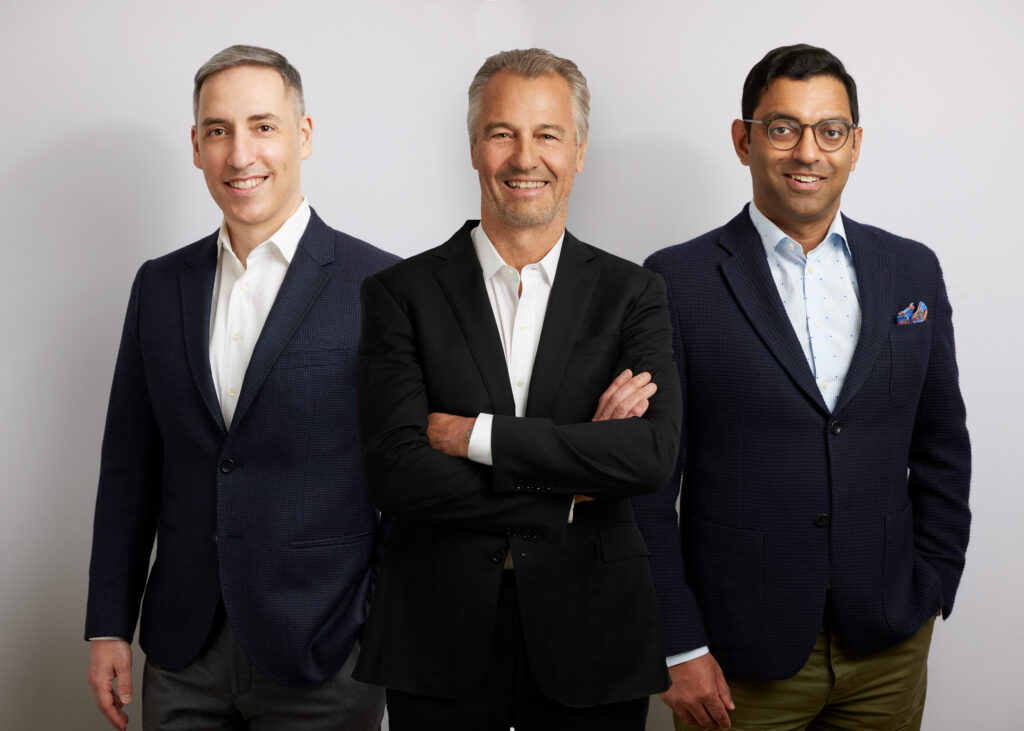
Toronto Hair Transplant Surgeons are internationally known for our pioneering work in hair transplantation.
What is Minoxidil/Rogaine for Hair Loss?
Minoxidil is the generic name for a topical solution applied to the scalp used to prevent hair loss in those with male pattern hair loss or female pattern hair loss. Together, these two types of hair loss are called genetic hair loss, or androgenetic alopecia. It is also used to regrow hair in people with genetic hair loss, or androgenetic alopecia. When used daily for 3-6 months or more, it is effective at preventing hair loss and stimulating hair growth, but results may take a few months to become noticeable.
Minoxidil use includes both approved and off-label applications, such as for androgenic alopecia and resistant hypertension. Treatment protocols, dosage, and long-term management are important considerations in clinical practice.
Topical minoxidil solution is one of only two Health Canada and FDA-approved medications specifically designed for regrowing hair. Topical formulations of minoxidil, including both liquid and foam, are available for treating hair loss. The most common brand name for topical minoxidil solution is Rogaine. These are the same solutions. The other Health Canada/FDA-approved medication is called finasteride; you can learn more about that here. Minoxidil is FDA approved for treating androgenic alopecia, making it a trusted option for addressing this condition.
Although technically topical minoxidil solution is only approved for hair loss and hair growth on the scalp, evidence shows that it can also be effective for enhancing beard and eyebrow hair growth.
History and Development of Minoxidil
Minoxidil’s journey began in the 1970s, when it was first developed as a powerful medication to treat severe high blood pressure. Originally used as an oral drug, minoxidil worked by opening potassium channels in blood vessels, helping to lower blood pressure in patients who did not respond to other treatments. However, doctors soon noticed an unexpected side effect: patients taking minoxidil for hypertension began to experience increased hair growth.
This surprising discovery led researchers to explore minoxidil’s potential as a treatment for hair loss. By 1987, topical minoxidil formulations were introduced specifically to address androgenetic alopecia, or hereditary hair loss, first in men and later in women. The topical formulation of minoxidil was developed in 1987 to treat androgenic alopecia, marking a significant advancement in hair loss treatment. Today, topical minoxidil is widely used to promote hair growth and treat female pattern hair loss, offering hope to millions dealing with thinning hair and receding hairlines. The development of minoxidil has transformed the landscape of hair loss treatment, making it one of the most trusted solutions for revitalizing hair and supporting healthy hair follicles.
What Does minoxidil /Rogaine Do?
Scientists believe that minoxidil/Rogaine works to stimulate hair growth by increasing blood flow to the scalp. This stimulates hair follicles that are in a resting (telogen) phase back into an active growth (anagen) phase.
Minoxidil, commonly known by the brand name Rogaine, is a proven solution for those looking to combat hair loss and encourage new hair growth. This medication works by revitalizing hair follicles, which can help increase hair density and promote the growth of thicker, healthier hair. When applied as a topical minoxidil solution or foam, it penetrates the scalp to stimulate hair follicles, slow down hair thinning, and support the regrowth of hair in areas affected by androgenetic alopecia or a receding hairline.
Available in both 2% and 5% strengths, minoxidil is suitable for both men and women experiencing thinning hair or hereditary hair loss. By promoting new hair growth and improving the overall health of the scalp, minoxidil helps users achieve fuller, more youthful-looking hair. Whether you’re just starting to notice hair loss or looking to maintain your current hair density, minoxidil offers a convenient, over-the-counter option to support your hair regrowth journey.
Our Results
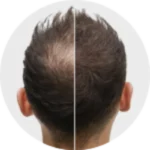
Toronto Hair Transplant Surgeons are internationally known for our pioneering hair transplantation work.
Our huge archive is here to help you see what we can do for you. Use the link below to view some sample cases.
How Does Minoxidil/Rogaine Work?
Minoxidil/Rogaine is a “prodrug” that must be converted by your body into its active form, minoxidil sulfate. This active compound causes blood vessels in your scalp to dilate, or open up, increasing blood flow to the scalp.
Pharmacology and Chemistry of Minoxidil
Minoxidil is a unique vasodilator that exerts its effects by opening potassium channels in blood vessels, which increases blood flow and oxygen delivery to the hair follicles. This enhanced circulation helps nourish the follicles, supporting the growth of stronger, healthier hair. The active form of the medication, minoxidil sulfate, is produced when sulfotransferase enzymes in the scalp convert the parent compound into its more potent state.
When applied as a topical minoxidil solution, the medication is absorbed through the skin and reaches peak levels within about an hour. Oral minoxidil, though less commonly used for hair loss, is absorbed from the digestive tract and also reaches peak levels quickly. Minoxidil is metabolized in the body through processes such as conjugation, sulfation, and hydroxylation, with its metabolites being less active than the original compound. While the elimination half-life of minoxidil is around 3 to 4 hours, its effects on blood vessels—and therefore on hair follicles—can last much longer, sometimes up to 72 hours. This unique pharmacological profile makes minoxidil an effective option for those seeking to regrow hair and improve scalp health.
Does Minoxidil/Rogaine Work?
Yes! About 85-90% of people with male pattern hair loss or female pattern hair loss who use topical minoxidil solution for at least a year will stop losing any more hair. About 50% of people who use it will see some degree of improved hair growth. According to a systematic review, minoxidil has demonstrated significant efficacy for hair regrowth in patients with hair loss. The amount of improved hair growth can vary from a little to a lot or something in between. Each person responds differently. Improved hair growth is most likely to occur towards the back of the scalp (crown area) compared to the front, especially in people with more advanced hair loss. Minoxidil is particularly effective for non scarring alopecia, such as androgenetic alopecia.
How Long Does it Take Minoxidil/Rogaine to Work?
THTS Gallery
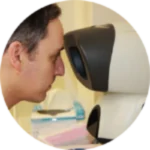
Familiarize yourself with our layout before you come in.
Visit the gallery to take a peek at our Oakville based clinic layout and surgical rooms.
At a minimum, it takes about 6 months of using topical minoxidil solution to see any improved hair growth. However, many people may only notice a slowing or stopping of their hair loss after 6 months. For them, it may take up to a year of using topical minoxidil solution before noticing improved hair growth. Initial effects of minoxidil can take approximately 8 weeks to become noticeable, with maximum results seen around 4 months. For this reason, we recommend trying topical minoxidil solution for at least a year before deciding if it works for you.
What Types of Minoxidil Products are Available?
Topical minoxidil solution is the only form approved for regrowing hair. Topical minoxidil solution is available in several types.
- Over-the-counter, 2% and 5% topical minoxidil solution. These concentrations are available over-the-counter at most pharmacies. Men should typically start with a 5% formula applied twice daily. Women typically start with a 2% formula applied twice daily. However, most women can tolerate a 5% formula applied once daily without unwanted side effects.
- Custom compounded, high-strength topical minoxidil solution. The main advantage of high-strength minoxidil is that it only needs to be applied once daily. This makes it more convenient to use, which means patients are more likely to stick with the treatment and get the full benefit. Custom compounded formulas may also contain other ingredients, such as retinoids, to enhance the absorption of the topical minoxidil solution into the scalp. These are not available over-the-counter.
- Custom compounded, high-strength minoxidil combined with other hair regrowth ingredients. High-strength, topical, minoxidil solution can also be combined with other ingredients that have been shown to stop hair loss and improve hair growth, such as bimatoprost and even topical finasteride. Although these other ingredients have not yet sought approval from Health Canada or the FDA to regrow hair, the available scientific evidence shows that they are probably effective and safe to use. These are not available over-the-counter.
How Do I Use Minoxidil/Rogaine?
Follow the directions on your bottle of topical minoxidil solution. Generally speaking, you should apply a small amount of minoxidil to the areas affected by hair loss and gently massage the solution into your scalp to enhance absorption. However, you can also apply minoxidil to areas that are not yet affected by hair loss to prevent hair loss in those areas.
Minoxidil should be applied directly to a dry scalp. Most of the minoxidil solution is absorbed within the first hour of application; however, you should wait for at least 2-4 hours before showering or swimming. When rinsing or cleaning your scalp after application, use cool tap water to avoid irritation. Do not blow-dry your hair after applying minoxidil solution, as this will cause the solution to evaporate before being absorbed by your scalp.
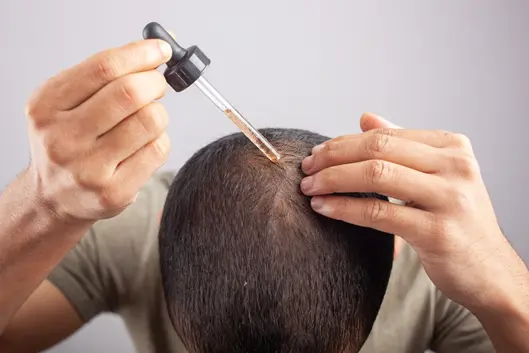
How Long Do I Have to Use Minoxidil/Rogaine?
Minoxidil should be used for as long as you want to maintain the hair that was thickened or improved by the minoxidil. It is important to know that stopping minoxidil will not cause you to lose any hair that you wouldn’t have already lost if you’d never used minoxidil at all. Missing an occasional application of minoxidil will not result in hair loss. If you miss a dose, simply apply the next dose at your usual time and do not double up to make up for the missed application. Stopping minoxidil completely will cause a gradual loss of the improvement achieved by using minoxidil over the course of about 3 months. Continuous use of minoxidil is necessary to maintain hair regrowth, as effects diminish after discontinuation. Hair loss that was being prevented by minoxidil may also occur.
Will I Build Up a Tolerance to Minoxidil/Rogaine? Will Minoxidil/Rogaine Stop Working After A While?
No. Minoxidil will help stimulate thinning or dying hair follicles to regrow thicker hair for as long as 2-3 years. After that, minoxidil continues to keep the hair in the growing (anagen) phase so that new hair is thicker and grows for a longer period of time. After three years, most people do not see a continued improvement because the thinning and dying hair follicles have been stimulated and have regrown. They might assume they have developed a tolerance, or that the minoxidil has stopped working. However, the minoxidil is still continuing to maintain the previously thinning follicles. Stopping minoxidil will cause the stimulated hair to re-enter a shedding and loss (telogen) phase.
Should I Use Minoxidil if I’m Having a Hair Transplant? Do I Need to Continue Minoxidil After My Hair Transplant?
Minoxidil can be useful in conjunction with a hair transplant for a number of reasons:
- It maintains or increases the growth of your transplanted, and non-transplanted, hair, thereby enhancing the overall cosmetic result of surgery. By preventing hair loss of the hair you still have, you will maintain a full head of hair for a longer period of time. It can also improve the hair growth of your transplanted hair.
- It works well in younger patients who may not yet be a good candidate for a hair transplant. Topical minoxidil solution can be used by those who are too young for a hair transplant to stabilize or stop their hair loss so that fewer follicles or grafts are needed to fix any hair loss that has already occurred. This is important because everyone is born with only a certain, fixed amount of follicles that they are able to donate for a hair transplant. If you use them up when you are too young and you continue to have hair loss, you may not have enough to fix any areas of hair loss in the future.
- It can stabilize or regrow hair in the back part of the scalp, from where donor grafts may be harvested. This may increase the total number of available donor grafts.
- It can stabilize or regrow hair in areas of your scalp that are not being transplanted, enhancing the overall cosmetic result of your surgery while minimizing the need for more surgery. For example, you may only have enough follicles to fix the front part of your scalp. Topical minoxidil solution can help you keep your existing hair over the back part of your scalp, or improve hair growth there if you’ve already had hair loss in those areas.
Is Minoxidil/Rogaine Safe? What Are the Side Effects of Minoxidil/Rogaine?
Topical minoxidil/Rogaine is very safe. Other forms of minoxidil, such as oral tablets that you swallow, have a higher rate of undesirable side effects, such as hair growth in unwanted areas, and may have significant effects on your heart at higher doses. For this reason, topical minoxidil solution is the preferred choice for improving hair growth. Oral minoxidil is not approved for regrowing hair. However, oral minoxidil treatment is sometimes used off-label for hair loss, but it carries a higher risk of systemic side effects compared to topical formulations.
Oral minoxidil can rarely cause pericardial effusion, which may progress to cardiac tamponade, including early cardiac tamponade and early cardiac tamponade induced by medication. These are potentially life-threatening complications that require prompt recognition and management, often involving emergency medicine specialists.
The most common side effects of topical minoxidil are:
- Hair shedding. Minoxidil can cause an initial mild increase in hair shedding of hairs that were going to shed in the next 100 days anyways, whether or not you use minoxidil. This may be up to about 10% of your total hairs. In areas affected by hair loss, this may be up to 20% of your hairs. For most people, this hair shedding is not noticeable. For some people, this hair shedding can be more dramatic. However, once shed, minoxidil causes these thin, resting hair to be replaced by thicker, healthier hair. Without minoxidil, these hairs would be replaced by smaller, miniaturized hair, until it is permanently lost, resulting in permanent hair loss, or balding
- Scalp itching and irritation. This can occur in areas where topical minoxidil solution is applied, and it occurs less than 5% of the time. Often this can be alleviated by simply skipping a day or two of minoxidil until the symptom subsides, and then resuming as normal.
- Heart effects. Rarely, a drop in blood pressure can occur, resulting in a rapid heart rate, headache, or dizziness. If this occurs, stop using minoxidil. In some cases simply reducing the amount of minoxidil used can alleviate this problem.
- Others. Rarely, people who are sensitive to minoxidil may experience water retention, ankle swelling, or chest pain. This is very rare for people who use topical minoxidil and more common in people who use oral minoxidil. If this occurs, stop using minoxidil.
Is There Anyone Who Cannot Use Minoxidil?
Patients who have a history of heart disease should discuss the use of minoxidil with the doctor who looks after their heart. Patients using systemic cyclosporine should not use minoxidil. Patients with a known adverse reaction or allergy to propylene glycol should not use minoxidil. Minoxidil may not work as well in patients taking aspirin, as aspirin inhibits the conversion of minoxidil to its active form.
How Do I Store Minoxidil?
Keep the bottle tightly capped when not in use. Keep at room temperature. Protect from direct sunlight.
Customer Reviews and Experiences
Many individuals who have tried minoxidil for hair loss have shared positive experiences, noting significant improvements in hair growth and a reduction in thinning hair. Users often report increased hair density, less hair shedding, and a healthier overall appearance of their hair after consistent use. For some, minoxidil has been a game-changer in their battle against hereditary hair loss, helping them regain confidence and achieve younger looking hair.
However, as with any treatment, experiences can vary. Some users have encountered adverse effects such as skin irritation, itching, or redness, particularly with the stronger 5% minoxidil solution. Rarely, individuals have reported side effects like weight gain, rapid heartbeat, or chest pain. These reactions are uncommon but highlight the importance of following application instructions and starting with a lower strength if you have sensitive skin. Overall, most people find minoxidil to be a safe and effective option for reducing hair loss and promoting hair regrowth, especially when used as part of a daily routine.



